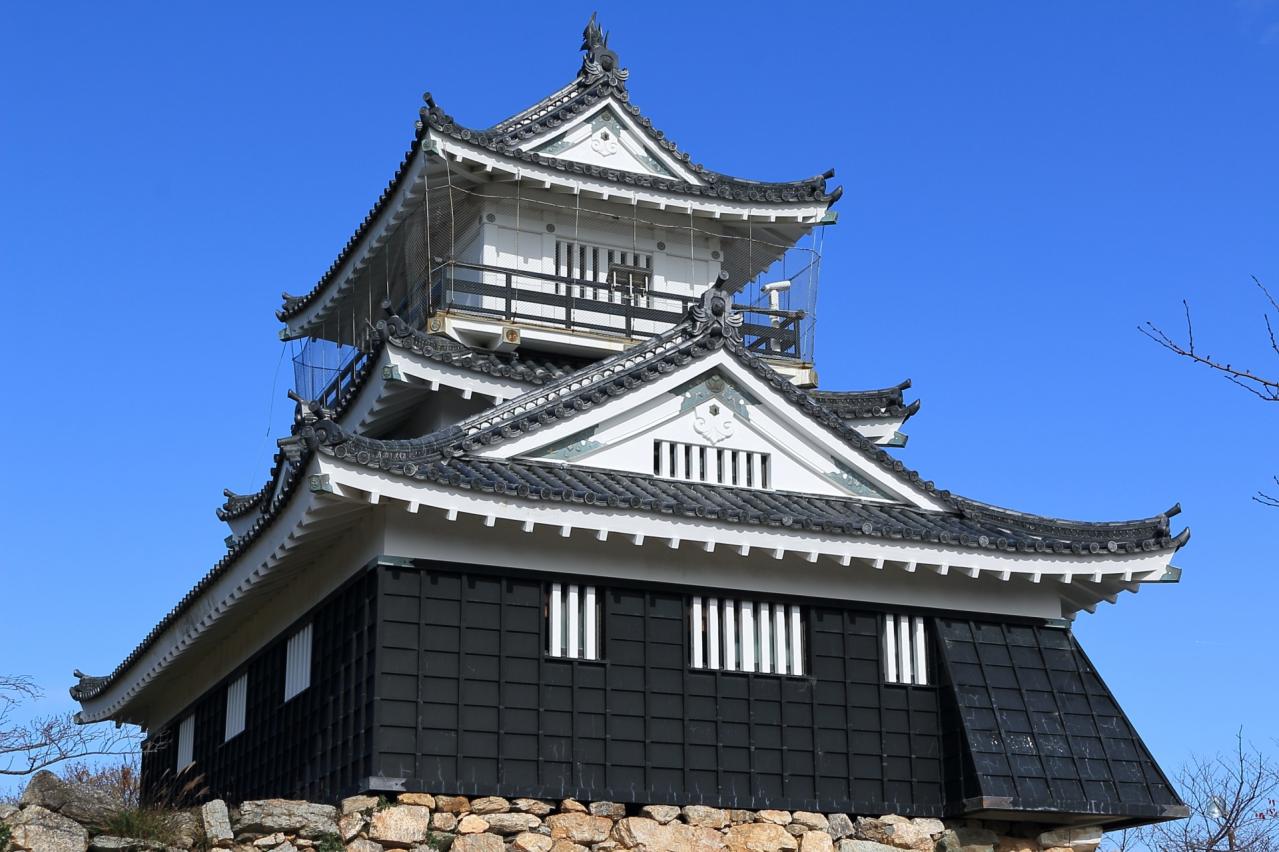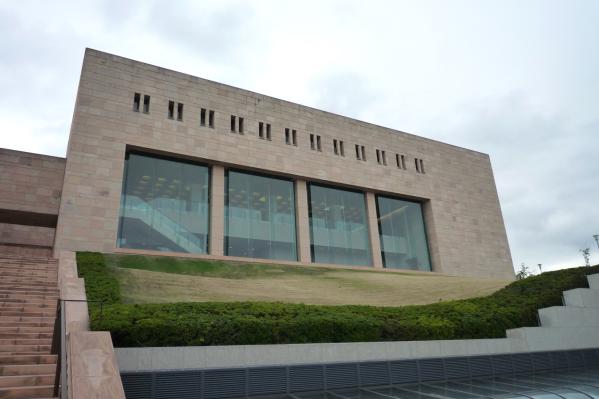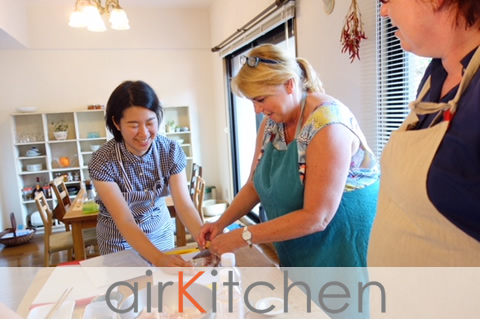
Hamamatsu Castle
The castle's construction method is called "terraced style," and it is arranged along the slopes of the Sanpohara plateau. At the highest point is the main keep, surrounded by other tiers including the honmaru (inner bailey), ninomaru (second bailey), and sannomaru (third bailey), arranged in a stepped manner. This structure is unique compared to other castles, exhibiting the characteristics of the "terraced style."
The current main keep of Hamamatsu Castle was reconstructed in 1959 with donations from local residents. It is estimated to be larger than the original keep, and it features exhibits about the castle's history and Ieyasu's life. Additionally, the observation deck offers a panoramic view of Hamamatsu city, and within the castle grounds, materials and armor related to Ieyasu and the history of Hamamatsu are also on display.
The historical significance of Hamamatsu Castle is closely tied to Ieyasu's rise, as many important events and battles in his life are associated with this castle. One particularly memorable defeat was the Battle of Mikatagahara in the first year of the Genki era (1572), an event that Ieyasu never forgot throughout his life. The castle also provides information about the historical sites and events related to battles.
Hamamatsu Castle serves as a significant base for Tokugawa Ieyasu and is a place where many visitors can experience critical milestones in his history. The castle and its historical value continue to be well-preserved and communicated to the present day.
Basic Information
- Spot Name
- Hamamatsu Castle
- Location
- 〒430-0946 100-2 Motojō-chō, Naka-ku, Hamamatsu-shi, Shizuoka Prefecture, Japan
- Access
- From Hamamatsu Station on the JR Tokaido Shinkansen, take the Entetsu Bus towards Hamamatsu City Hall for 5 minutes. Get off at "Shiyakusho-mae" and walk for 3 minutes.
- Parking
- Parking available
- Business Hours
- 8:30 AM to 4:30 PM
- Regular Holiday
- December 29 to December 31.
- Fees
- Adults (high school students and above) 150 yen, free for junior high school students and below.
- Contact Information
- Phone Number:053-453-3872
- Official Website
Map
Detailed Information
History of Hamamatsu Castle
Hamamatsu Castle, built by Tokugawa Ieyasu, is known as the "Success Castle," which served as a foothold for the unification of Japan.
▶ Background of the Castle's Construction
In 1568, Tokugawa Ieyasu began his advance from Mikawa and started to suppress the Imagawa territory. Anticipating an invasion by Takeda Shingen, who was attacking Suruga, Ieyasu focused on the Mikatahara plateau, which overlooked the entire Enshu area. Concluding that he must defeat Shingen to achieve his ambitions of ruling the land, Ieyasu ceded Okazaki Castle to his eldest son Nobuyasu in 1570 and built Hamamatsu Castle at the southeastern tip of the Mikatahara plateau as the base for managing Suruga and Enshu.
▶ Style of Construction
The castle complex of Hamamatsu Castle measures about 500 meters north to south and about 450 meters east to west. Following the slope of the Mikatahara plateau, the main keep is located at the highest point to the northwest, with the honmaru (main bailey), ninomaru (secondary bailey), and sanmaru (third bailey) arranged in a near-straight line to the east. This construction method is known as the "terraced style," where each bailey is adjacent to one another and built in a step-like fashion, with the back of the honmaru serving as a natural defense.
▶ Battles During Ieyasu's Time
Tokugawa Ieyasu spent 17 years living in Hamamatsu Castle from the age of 29 to 45. Notable battles such as the Battle of Anegawa, the Battle of Nagashino, and the Battle of Komaki-Nagakute occurred during this period, particularly the Battle of Mikatahara in 1572, which is said to have been more intense than the Battle of Sekigahara. The 17 years that Ieyasu spent residing in Hamamatsu were a challenging period that laid the groundwork for the 300 years of Tokugawa rule.
▶ The Battle of Mikatahara
The Battle of Mikatahara took place in 1572, when Tokugawa Ieyasu's forces clashed with Takeda Shingen's troops on the Mikatahara plateau, marking Ieyasu's greatest defeat in his life. Facing Takeda's 30,000 men, Ieyasu had fewer than 10,000 troops. Realizing he could not win, Ieyasu removed his helmet and fled back to Hamamatsu Castle disguised as a retainer. After returning to the castle, he had a picture painted of his dejected face immediately after the defeat, and it is said that he cherished this painting throughout his life as a reminder of his loss. During the night after the battle, Ieyasu attempted to retaliate by launching a surprise attack on the Takeda forces camped at Saigagake on the southern edge of the Mikatahara plateau. By draping a white cloth over a cliff to create the illusion of a bridge, the geographically unfamiliar Takeda troops fell one after another to the valley below. This area is still known as "Nuno-bashi" (Cloth Bridge). To this day, a local performance called "Enshu Dainenbutsu" is held every July 15 at Saigagake to honor the fallen from the Battle of Mikatahara, which has been designated as an intangible cultural asset of the city.
Azuki Mochi and Zenitori
In Hamamatsu, place names related to the Battle of Mikatahara remain. For example, it is said that after his army was defeated, Ieyasu felt hunger while fleeing and stopped at a tea house to eat azuki mochi. The Takeda troops pursued him, and Ieyasu panicked and ran out without paying. The shocked old woman who ran the tea house managed to pursue him for several kilometers to collect her payment. This incident led to the tea house's location being named "Azuki Mochi," and the place where the old woman collected the money was called "Zenitori."
▶ Hamamatsu Castle After Ieyasu's Departure
Following Tokugawa Ieyasu's move to Sunpu Castle, Hamamatsu Castle was guarded by successive daimyōs closely associated with the Tokugawa clan. Many of the castle lords held important positions in the shogunate, resulting in the castle later being referred to as the "Success Castle." After the Meiji Restoration, the castle was destroyed and fell into disrepair. However, in 1958, a new main keep was rebuilt on the old stone foundation, and the following year it was designated a historic site of Hamamatsu City.
▶ The Significance of the Success Castle
Over the course of 260 years of domain rule, 25 lords were born at Hamamatsu Castle. Many took high positions in the shogunate during their time there (including five shōgun, two Osaka castle lords, two Kyoto governors, and four temple and shrine officials, including concurrent positions), which contributed to the castle's reputation as the "Success Castle." Among them, the most notable was Mizuno Tadafumi, who implemented the Tempo Reforms. It is said that he proactively became the lord of Hamamatsu Castle, inspired by Ieyasu's achievements in unifying Japan.
Hamamatsu Castle Movies
Shizuoka Tourist Attractions
View ListNumazu Deep Sea Aquarium
Numazu Deep Sea Aquarium is the only aquarium in Japan that showcases deep-sea creatures from Suruga Bay. The deepest part of Suruga Bay reaches 2,500 meters, making...
Kinomiya Shrine
Kinuami Shrine has been revered as a deity of good fortune and auspiciousness for many years, and within its grounds stands the "Great Camphor Tree," a national natu...
Shizuoka Prefectural Mount Fuji World Heritage Center
The Fujisan World Heritage Center in Shizuoka Prefecture is a facility where visitors can learn about the history, culture, and nature related to the World Cultural ...
Mishima Skywalk
Mishima Skywalk is Japan's longest pedestrian suspension bridge, measuring 400 meters, and it opened in 2015. The bridge features a highly transparent mesh structure...
MOA Museum of Art
The MOA Museum of Art is a representative museum of Atami, boasting a collection of approximately 3,500 items focusing on East Asian art, including paintings, callig...
Mihomatsubara (Hagoromo no Matsu)
Miho Matsubara is a scenic spot located on the Miho Peninsula protruding into Suruga Bay, registered as part of the UNESCO World Cultural Heritage site "Mount Fuji -...
Fuji Safari Park
Fuji Safari Park is a safari park located at the foothills of Mount Fuji, consisting mainly of two areas: the Safari Zone and the Interaction Zone. In the Safari Zon...


![[ 静岡県浜松市 ] 浜松城](https://i.ytimg.com/vi/9t4-AxKWDTA/mqdefault.jpg)


![[ 旅(観光地・施設) ] 浜松城(静岡県浜松市中区元城町100−2)](https://i.ytimg.com/vi/aCiMjap1zOs/mqdefault.jpg)









































